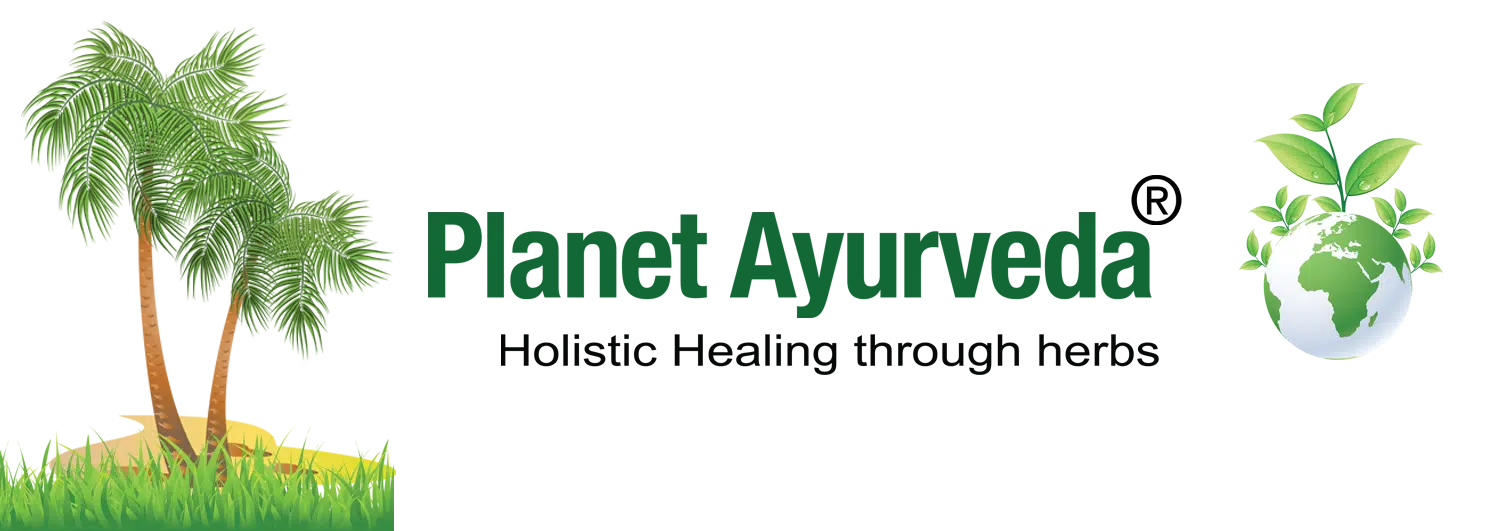Gomed Mani Bhasma – Medicinal Properties, Ingredients, Indications, Dosage & More
Reference : Rastantrasaar and Siddhaprayog Sangraha/Bhasam prakran/Page no. 89
Abstract
Gomed Mani Bhasma (Calx of Hessonite Garnet) is a classical Ayurvedic mineral formulation prepared by purifying and incinerating Gomed (Hessonite Garnet). It is a potent Rasayana (rejuvenative medicine) known for balancing Kapha (structural and fluid stability) and Pitta (metabolic and heat regulation) doshas. It is particularly effective in enhancing the functions of the Medha (intellect), Manas (mind), and Hridaya (heart), thereby offering therapeutic benefits in neurological and cardiac ailments. This Bhasma strengthens vital bodily tissues (Dhatus), enhances digestive fire (Agni), sharpens mental faculties (Buddhi), and supports cardiovascular health. This article reviews its ingredients, traditional preparation methods, medicinal properties, clinical indications, dosage, contraindications, and therapeutic relevance.
Introduction
Gomed Mani (Hessonite Garnet) is a precious and sacred gemstone highly revered in Ayurveda for its unique therapeutic qualities. Traditionally, raw Gomed Mani is not used directly; instead, it undergoes a meticulous process of Shodhana (purification) and Bhasmikarana (incineration) to convert it into Gomed Mani Bhasma (calx of Hessonite Garnet). This transformation significantly enhances the bioavailability and therapeutic potency of the mineral, making it easier for the body to absorb and utilize. It is traditionally used for improving brain and heart functions, balancing doshas, and treating diseases related to Kapha and Pitta imbalance, like Kshay (wasting), Pandu (anemia), epilepsy, and mental disorders.
Ingredients
- Pramukh Dravya (Primary Ingredients)
- Gomed Mani (Hessonite Garnet)
- Manasila (Realgar – Arsenic disulfide, As2S2)
- Hartala (Orpiment – Arsenic trisulfide, As₂S₃)
- Gandhaka (Sulfur)
- Bhavana Dravya (Triturating/Levigating Media)
- Katphal juice (Artocarpus heterophyllus)
- Additional Adjuncts (Used In An Alternate Preparation Method)
- Chandan (Santalum album)
- Gulab (Rosa damascena)
- Kevda (Pandanus odoratissimus)
These are used especially in the preparation of Pishti (powder form), a gentle version of the Bhasma (calx).
Description Of Ingredients
1. Gomed Mani (Hessonite Garnet)
It is a semi-precious gemstone highly valued in Ayurveda for its therapeutic and spiritual properties. It is considered one of the nine precious gems (Navaratna) in traditional Indian culture. It is known to pacify the aggravated Kapha and Pitta doshas, and has an influence on the Manas (mind) and Hridaya (heart). Traditionally, when purified and processed into Bhasma (calcined ash), it becomes a potent Rasayana (rejuvenator), useful in conditions such as Pandu (anemia), Kshay (consumption), Apasmara (epilepsy), and various Manasika Vyadhi (mental disorders). Its mineral composition is believed to enhance Medha (intellect), improve Rasa Dhatu (plasma), and strengthen Ojas (vital energy), thereby promoting overall mental stability and vitality.
2. Manasila (Realgar – Arsenic Disulfide, As2S2)
It is a bright orange-red mineral valued in Rasashastra for its potent therapeutic nature. It requires meticulous Shodhana (purification) before medicinal use. In its purified form, Manasila is considered Yogavahi (catalyst) and is often incorporated into formulations for its Deepana (appetiser) and Pachana (digestive stimulant) actions, as well as its ability to act on stubborn Dosha Dushti (derangements of body humors). It is traditionally used in very minute doses in conditions such as Kushtha (chronic skin disorders), Krimi (parasitic infestations), and certain respiratory ailments, where vitiation of Kapha and Pitta is prominent. Its arsenic content exerts antimicrobial and antiparasitic effects, while its sulfur component supports detoxification pathways and skin healing.
3. Hartala (Orpiment – Arsenic Trisulfide, As₂S₃)
It is a bright yellow mineral described in Ayurvedic Rasashastra as a potent Rasadravya (mineral drug). It has Krimighna (antimicrobial), Kusthaghna (skin disease alleviating), Lekhana (scraping), and Rasayana (rejuvenating) properties. It has been classically employed in conditions like Kushtha (skin disorders), Shwasa (asthma), Kasa (cough), and Krimi (parasitic infestations). Its therapeutic action is attributed to the antimicrobial and keratolytic properties of arsenic sulfide, which help suppress microbial growth and facilitate the removal of diseased skin tissue. In appropriate doses, it also exhibits immunomodulatory and detoxifying effects, supporting systemic healing and restoration.
4. Gandhaka (Sulfur)
It is regarded for its Rasayana (rejuvenating), Krimighna (antimicrobial), and Kushtaghna (skin disease-alleviating) properties. Classical texts mention its role in managing Kushtha (skin disorders), Visarpa (erysipelas), and Krimi (parasitic infestations), as well as its ability to enhance the potency of other medicines as a Yogavahi (bio-enhancer). In Rasaushadhi (herbo-mineral formulations), it acts as an essential base, aiding in smooth blending and stability of preparations. Sulfur demonstrates keratolytic, antifungal, antibacterial, and antiparasitic actions, supporting its use in various dermatological and systemic conditions.
5. Katphal Juice (Artocarpus Heterophyllus)
It has Grahi (absorption-promoting), Stambhana (astringent), and Pittashamaka (Pitta-pacifying) actions. Traditionally, it is used to manage conditions like Atisara (diarrhea), Pravahika (dysentery), and Raktapitta (bleeding disorders), owing to its cooling, astringent, and nutritive qualities. It’s Sheetala (cooling) and Pittashamaka (Pitta-pacifying) nature helps calm irritability, anger, and restlessness that are often linked to aggravated Pitta and excess heat in the body. The juice is also considered Balya (strength-promoting) and Pushtikar (nourishing), helping to restore vitality in weakened individuals. In this formulation, it serves as a Bhavana Dravya (liquid medium) to enhance the stability, potency, and synergistic action of the ingredients. The juice is rich in antioxidants like vitamin C, flavonoids, and carotenoids, which help protect neuronal cells from oxidative stress. The natural sugars provide a gentle energy boost, supporting neurotransmitter synthesis and brain function, while certain phytochemicals may modulate serotonin and dopamine pathways, thereby improving mood and reducing anxiety.
6. Chandan (Santalum Album)
It is regarded in Ayurveda as Sheeta Virya (cooling in potency) and Sugandhit Dravya (fragrant substance), possessing Dahaprashamana (alleviating burning sensation), Raktaprasadana (purifying blood), and Manah-Prasādana (calming the mind) qualities. It is Pittashamaka (pacifying aggravated Pitta) and supports Tvak-Roga (skin disorders) management by reducing inflammation and promoting a healthy complexion. Its cooling aroma is traditionally considered to uplift mood, relieve restlessness, and promote mental clarity, making it beneficial in Santap (heat-related stress) and Atipitta (excess heat conditions).
7. Gulab (Rosa Damascena)
It has Sheeta Virya (cooling potency), Raktaprasadana (blood purifying), Hrudya (cardiac tonic), and Varnya (complexion-enhancing) properties. It pacifies Pitta and balances emotional disturbances arising from excessive heat or stress. Traditionally, rose petals and their preparations are used to alleviate Daha (burning sensation), Santap (heat-induced exhaustion), and Mukhapaka (oral ulcers). The gentle aroma and phytoconstituents like flavonoids and essential oils contribute to Manah-Prasādana (calming the mind), promoting emotional balance, and supporting restful sleep.
8. Kevda (Pandanus Odoratissimus)
It is renowned in Ayurveda for its Sugandhita (aromatic), Sheeta Virya (cooling potency), and Hrudya (heart-soothing) qualities. It is used traditionally to alleviate Daha (burning sensation), Trishna (excessive thirst), and Santap (heat-induced restlessness). The fragrant extract and floral water act as Manah-Prasādaka (mind-pleasing), helping to reduce irritability and mental fatigue. Phytochemicals like linalool, terpene alcohols, and phenolic compounds contribute to its antioxidant and neuro-relaxant effects, making it supportive in calming the nervous system and uplifting mood.
Method of Preparation
First Method
- Take equal parts of purified Manasila (Realgar), Hartala (Orpiment), and Gandhaka (Sulfur), along with an equal quantity of finely powdered purified Gomed Mani (Hessonite Garnet).
- Mix all these finely powdered ingredients thoroughly and triturate (Bhavana) them in fresh Katphal (Jackfruit) juice for 12 hours.
- After proper trituration, place the mixture over the fire fueled by 2 ser (approximately 2 kg) of Aranya Kanda (wood from the forest).
- Subject the mixture to 8 Puta (calcination cycles), repeated heating and cooling, to ensure complete transformation into Bhasma.
- Upon completion of the eighth Puta, the Gomed Mani Bhasma is ready for medicinal use.
Second Method of Preparation (Pishti Form)
- Prepare a fragrant extract by blending Chandan (Santalum album), Gulab (Rosa damascena) flowers, and Kevda (Pandanus odoratissimus) flowers.
- Mix this prepared extract thoroughly with the fine powder of purified Gomed Mani (Hessonite Garnet).
- Triturate the mixture carefully until a fine Pishti (soft powder) is formed.
- This Pishti (soft powder) is considered saumya (gentle) compared to the Bhasma (calx) and is suitable for patients requiring milder formulations.
Medicinal Properties
- Sheetveerya (Cold potency)
- Deepana (Stimulates digestive fire)
- Pachana (Enhances metabolism)
- Ruchikara (Promotes appetite)
- Tvachya (Nourishes and improves skin)
- Buddhiprabhodhanam (Enhances intellect and cognition)
- Balya (Strength-giving)
- Veerya Vardhaka (Potency enhancer)
- Ayu Vardhaka (Promotes longevity)
- Kapha-Pitta Hara (Pacifies Kapha and Pitta dosha)
- Pandu Nashaka (Treats anemia)
Indications
- Apasmara (Epilepsy)
- Chittavibhrama (Mental confusion and dullness)
- Unmada (Insanity)
- Pakshaghata (Paralysis and stroke)
- Nidranasha (Insomnia)
- Hridya Durbalya (Heart weakness and palpitations)
- Kshay (Tuberculosis)
- Pandu (Anemia)
- Kapha-Pitta Vikara (Disorders caused by aggravated Kapha and Pitta)
- Manasika Durbalya (Cognitive decline and mental debility)
- It alleviates the afflictions caused by Rahu Graha
Dosage of Gomed Mani Bhasma (Calx of Hessonite Garnet)
1 to 2 Ratti (approx. 125–250 mg)
Note: The dose and usage of this Pishti (soft powder) are the same as the Gomed Mani Bhasma (Calx of Hessonite Garnet) prepared by the first method.
Anupana (Adjuvants)
Can be taken with Malai (cream), honey, or Elaadi Mantha (a traditional herbal formulation).
Vishesh Anupana (Special Adjuvants)
When used for calming the mind or in cases of increased brain heat, it is given along with Kasturi (Moschus moschiferus), Kesar (Crocus sativus), and honey to enhance its soothing and strengthening effects.
Contraindication
- Avoid if the Bhasma is not properly purified or prepared.
- Avoid in patients with known hypersensitivity to mineral or herbo-mineral preparations.
Conclusion
Gomed Mani Bhasma (Calx of Hessonite Garnet) is a potent herbo-mineral preparation with proven benefits in balancing Kapha and Pitta doshas, enhancing mental clarity, and strengthening the heart and nervous system. Its combination with specific Anupanas (adjuvants) enhances its efficacy and patient tolerance. When used judiciously, it acts as a powerful rejuvenator and disease modifier, supporting long-term health and well-being.
Frequently Asked Questions (FAQ’s)
1. Is Gomed Mani Bhasma safe to consume?
Yes, when it is properly purified and prepared according to classical methods, it is safe in prescribed doses.
2. What diseases or conditions can it help with?
It is traditionally used in Apasmara (epilepsy), Pakshaghata (paralysis), mental confusion, insomnia, Pandu (anemia), Kshay (tuberculosis), heart weakness, and conditions caused by aggravated Kapha and Pitta doshas.
3. What is the difference between Gomed Mani Bhasma and Gomed Mani Pishti?
Bhasma (calx) is fully calcined ash prepared through repeated heating cycles, while Pishti (soft powder) is a gentle, non-calcined powder prepared by grinding the purified gemstone with herbal extracts. Pishti (soft powder) is considered milder and suitable for sensitive patients.
4. Can it be taken daily for general wellness?
It can be used as a Rasayana (rejuvenator) for long-term wellness, but only under the supervision of an Ayurvedic doctor to ensure the right dosage and prevent toxicity.
5. Can pregnant or breastfeeding women use it?
It is generally not recommended during pregnancy or lactation unless specifically advised by a qualified Ayurvedic doctor.
6. How long does it take to see results?
The effect depends on the condition being treated. Some patients may notice improvements in energy, mood, and digestion within a few weeks, while chronic neurological or cardiac conditions may require longer, monitored use.
7. Is it the same as wearing a Gomed stone?
No. Wearing a gemstone is for astrological purposes, while Gomed Mani Bhasma is an Ayurvedic medicine meant for internal use after purification.



